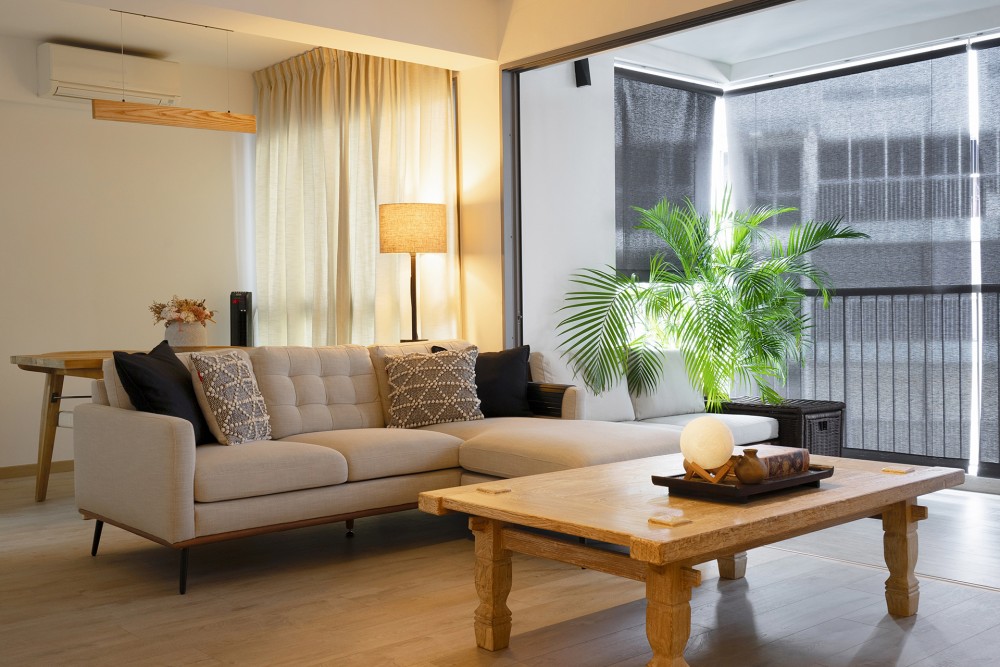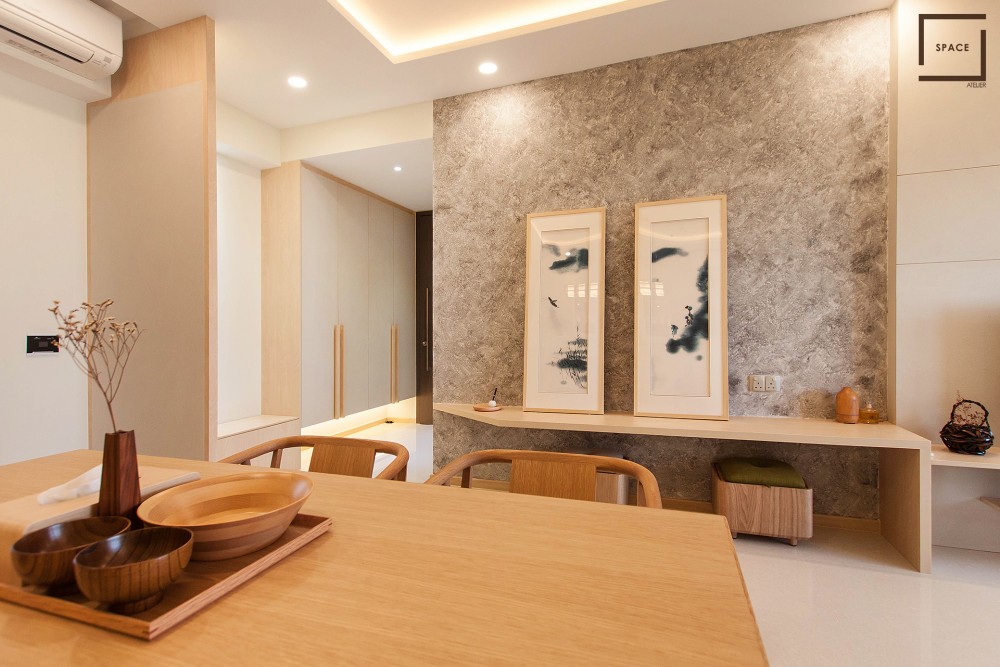8 Essential Home Appliances For Your Newly Renovated Home
Congratulations on your newly renovated home! As you settle into your fresh space, it’s essential to equip it with appliances that enhance functionality and comfort.
From the heart of the kitchen to the depths of the laundry room, these essential appliances will streamline your daily routines and elevate your living experience.
1. Refrigerator
The cornerstone of any kitchen, a modern refrigerator plays a pivotal role in preserving your groceries and keeping your beverages refreshingly cold. When selecting the right refrigerator for your newly renovated home, it’s essential to consider several factors tailored to your lifestyle and household needs.
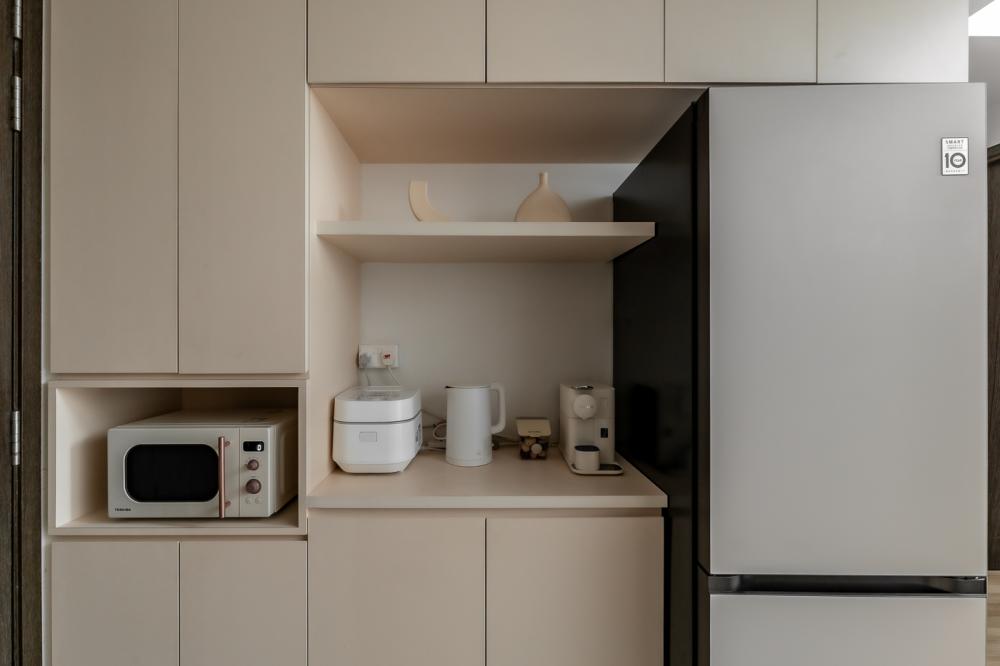

101 West Coast Vale, Parc Riviera ($80,000) by Dan Avenue Pte Ltd
Family size and storage space
First and foremost, take stock of the size of your family and your typical grocery shopping habits. A larger family will naturally require more storage space to accommodate a greater volume of perishable items. Similarly, if you enjoy hosting gatherings or frequently entertain guests, opting for a refrigerator with ample storage capacity ensures you have enough room to store food and beverages for everyone.
Consider the layout of the refrigerator interior, including adjustable shelves, door bins, and drawers, which can help optimize storage space and accommodate items of varying shapes and sizes. Additionally, think about your preferred organization system to ensure easy access to frequently used items and efficient utilization of available space.
Cooking habits and freezer compartment
Next, evaluate your cooking habits and reliance on frozen foods to determine the appropriate size and configuration of the freezer compartment. If you cook meals from scratch frequently or prefer to batch-cook and freeze portions for later use, prioritizing a refrigerator with a spacious freezer compartment is essential.
Some modern refrigerators feature flexible storage options in the freezer, such as adjustable shelves, sliding baskets, and dividers, allowing you to customize the layout to suit your needs. Additionally, consider features like quick-freeze settings and frost-free technology, which help preserve the quality of frozen foods and minimize freezer maintenance tasks.
2. Stove
When it comes to equipping your newly renovated kitchen with a stove, one of the primary decisions you’ll face is choosing between an induction cooktop and a gas range.
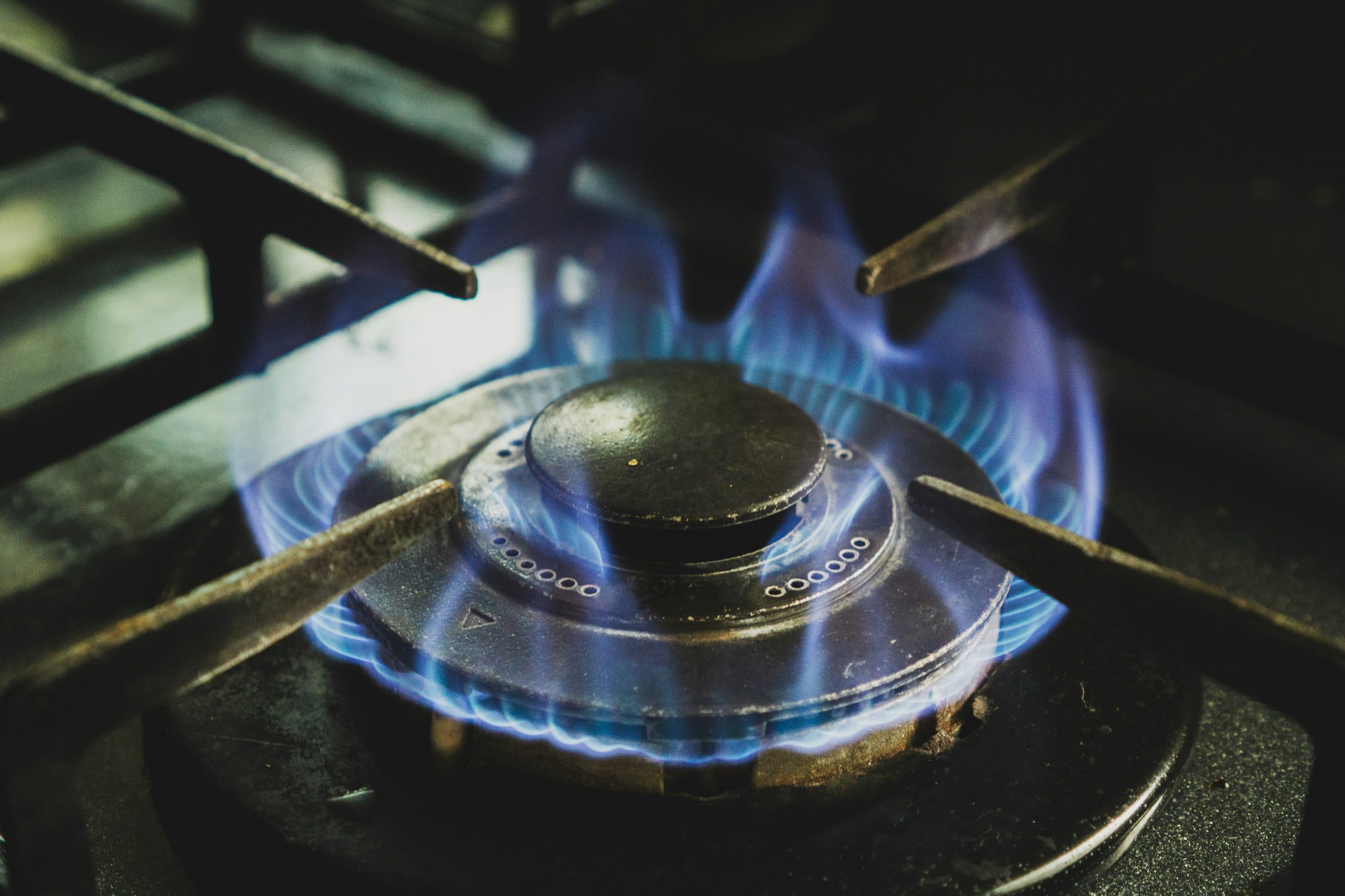

Each option offers its own set of advantages and considerations, allowing you to tailor your choice to your cooking preferences and kitchen setup.
Firstly, let’s discuss induction stoves. These stoves have gained popularity in recent years for their rapid heating, precise temperature control, and sleek design. Utilizing electromagnetic technology, these cooktops heat pots and pans directly, resulting in faster cooking times and greater energy efficiency compared to traditional gas stoves.
Pros of induction stoves include:
- Rapid heating: Induction cooktops heat up quickly, reducing the time spent waiting for pots and pans to reach the desired temperature.
- Precise temperature control: With precise temperature settings and instantaneous adjustments, induction cooktops offer greater control over cooking processes, making them ideal for delicate tasks like simmering and sautéing.
- Safety features: Induction cooktops remain cool to the touch, minimizing the risk of burns, and feature automatic shut-off mechanisms that activate when cookware is removed from the surface.
- Easy cleanup: The smooth, glass-ceramic surface of induction cooktops is easy to clean and maintain, requiring minimal effort to wipe away spills and splatters.
On the flipside, induction stoves come with some disadvantages as well:
- Compatibility: Induction cooktops require cookware with magnetic properties to function properly, limiting the selection of compatible pots and pans.
- Learning curve: Users transitioning from gas or electric stoves may require some adjustment to the different heating dynamics and cooking techniques associated with induction cooktops.
Next, let’s discuss traditional gas stoves. Gas stoves have long been favoured by home cooks for their responsive heat control, visible flame, and familiarity. With open flames providing direct heat, gas stoves offer versatility for a wide range of cooking methods and culinary styles.
Here’s what home cooks like about gas stoves:
- Versatility: From high-heat searing to gentle simmering, gas ranges offer versatility for a variety of cooking methods and cookware types.
- Reliability: Gas ranges continue to operate even during power outages, providing peace of mind in emergency situations.
- Visual feedback: The visible flame of a gas stove provides visual feedback, allowing you to monitor heat levels and adjust accordingly.
- Enhanced flavour and aroma: Some home cooks believe that food cooked over a gas stove develops a richer flavor and aroma compared to other cooking methods. The direct heat from the flame imparts a unique charred essence, adding depth and complexity to dishes like charred vegetables, grilled meats, and roasted peppers.
On the other hand, here are some disadvantages of gas stoves:
- Cleanup: Gas burners and grates can be more challenging to clean compared to smooth induction cooktops, requiring regular maintenance to remove grease and food residue.
- Energy efficiency: While gas ranges offer precise heat control, they may be less energy-efficient than induction cooktops, especially if used for extended cooking periods.
If you can’t decide between the two, you can always have the best of both worlds by getting a gas stove and an induction stove. By incorporating both gas and induction stoves into your kitchen setup, you can enjoy the unique benefits of each cooking method and tailor your culinary experience to suit different preferences and cooking scenarios.
3. Microwave oven
While some may view microwave ovens as optional kitchen appliances, dismissing them as mere tools for reheating leftovers, the reality is far more versatile. Microwave ovens offer a myriad of culinary functions that can streamline meal preparation, enhance cooking techniques, and even unleash your creativity in the kitchen.


While it’s true that microwave ovens excel at quickly reheating leftovers, their capabilities extend far beyond this basic function. With the ability to defrost frozen foods in minutes, melt chocolate or butter without the risk of scorching, and steam vegetables to perfection, a microwave oven becomes an indispensable ally in your culinary arsenal.
For busy individuals or families with hectic schedules, microwave ovens provide unparalleled convenience. Whether you’re whipping up a quick breakfast on-the-go, preparing a last-minute dinner after a long day, or simply craving a warm mug of soup on a chilly evening, the rapid heating and cooking capabilities of a microwave oven can save both time and effort in the kitchen.
When selecting a microwave oven for your newly renovated kitchen, consider the range of options available to suit your specific needs and preferences. While a basic microwave may suffice for simple reheating tasks, investing in a hybrid model offers expanded functionality and versatility.
For example, hybrid models include combination microwave/convection ovens and microwave/steamer ovens. First, combination microwave/convection ovens marry the convenience of microwave technology with the superior cooking performance of convection heating. These versatile appliances allow you to bake, roast, and brown foods with the same efficiency and speed as a traditional oven, making them ideal for households seeking space-saving solutions without sacrificing cooking quality.
As for microwave/steamer ovens, these are a good option for health-conscious individuals or anyone who prioritizes nutrient-rich cooking methods. By harnessing the power of steam, these appliances preserve the natural flavors, colors, and nutrients of foods while reducing the need for added fats or oils. From steamed vegetables to tender fish fillets, microwave/steamer ovens provide a healthier approach to meal preparation without sacrificing taste or convenience.
4. Electric kettle
In any kitchen, a kettle is a practical and essential appliance. It provides a simple and efficient way to boil water for various purposes, making it a must-have for everyday use.
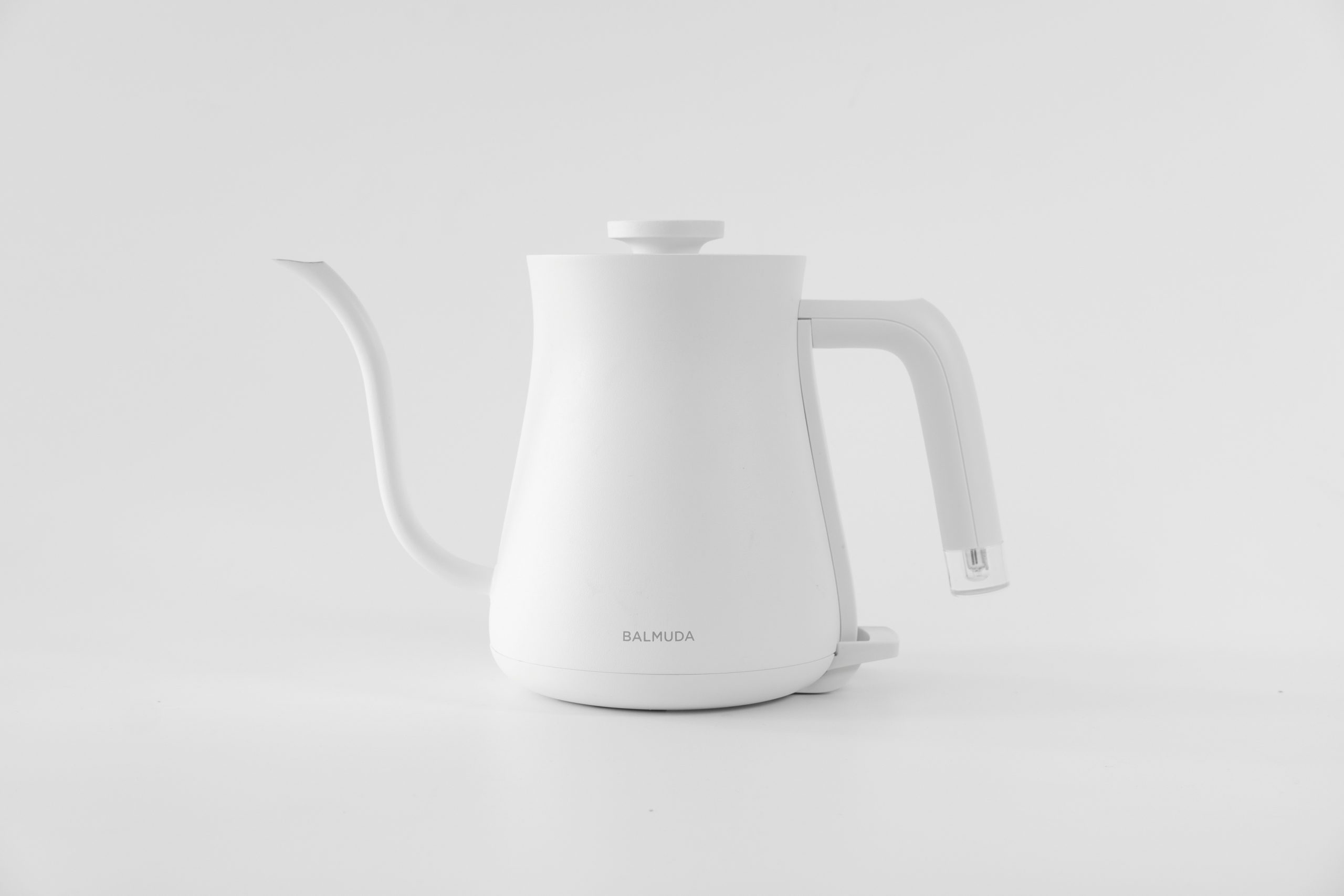

Basic kettles offer straightforward functionality, allowing you to quickly heat water with the flip of a switch or the press of a button. They are reliable and easy to use, making them perfect for everyday tasks like making tea, coffee, or instant meals.
Then there are fancier kettles, which come with additional features such as built-in temperature control settings, keep warm functionality, and specialized modes for brewing coffee or tea. For example, some kettles have adjustable temperature settings to help you achieve the optimal brewing temperature for different types of beverages. If you want to brew your coffee at exactly 90 degrees Celsius, for example, you can do that with a kettle with adjustable temperature settings.
5. Washing machine and dryer
In the modern household, few appliances are as essential as the washing machine and dryer. These workhorses of domestic life take the hassle out of laundry day, providing convenience, efficiency, and peace of mind to busy households. Let’s explore why the washing machine and dryer are indispensable staples in homes around the world, and the different options available to suit individual preferences and needs.
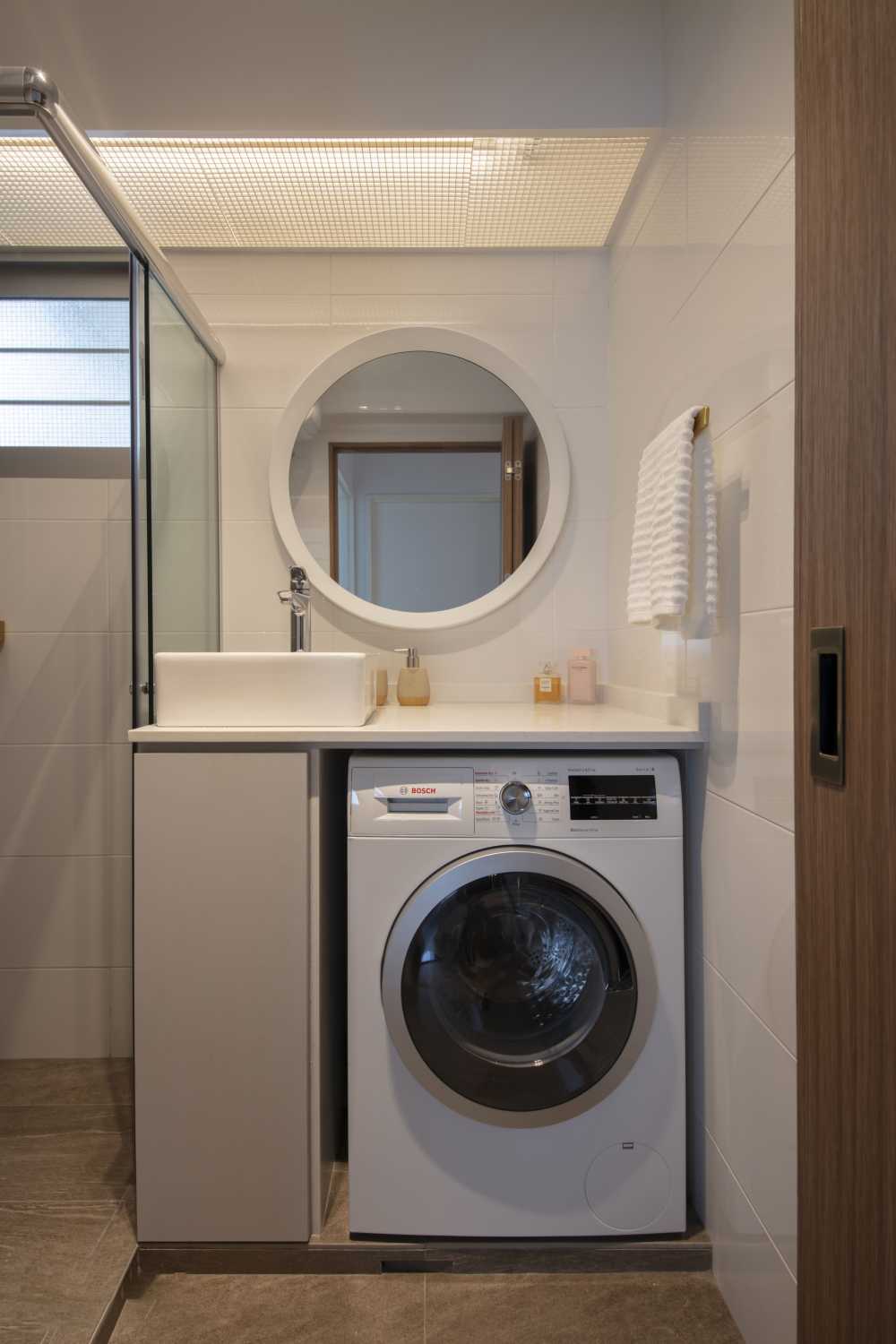

Anchorvale Lane ($35,000) by Ecasa Studio
Firstly, the washing machine and dryer duo streamline the laundry process, allowing you to tackle your dirty clothes with ease. With the push of a button, you can efficiently wash and dry loads of laundry, freeing up valuable time for other tasks and activities.
When it comes to purchasing your washing machine and dryer, you have two options: separate washing machines and dryers or combined washer-dryer units. Each option offers its own set of pros and cons, depending on your preferences and space constraints.
Firstly, separate washing machines and dryers provide maximum flexibility in the laundry room. You can wash and dry multiple loads simultaneously, allowing for faster turnaround times and greater productivity. Additionally, if one machine requires maintenance or repair, the other can still be used, minimizing disruptions to your laundry routine.
On the other hand, combined washer-dryer units offer space-saving convenience, making them ideal for smaller homes or apartments with limited space for bulky appliances. These all-in-one appliances wash and dry clothes in a single machine, eliminating the need for separate units and reducing clutter. However, they may have smaller capacity and longer cycle times compared to separate machines, and if one function malfunctions, both washing and drying capabilities may be affected.
If you’re intending to get a combined washer-dryer, also note that these units typically come with different capacities for washing and drying loads. For example, a combined washer-dryer unit may have an 11kg washing load capacity, allowing you to wash a substantial amount of laundry in one cycle. However, the drying load capacity is often smaller, typically around 7kg or less.
The difference in washing and drying load capacities is due to several factors, including the mechanics of the drying process and the limitations of the appliance design. Drying requires more space within the drum for proper airflow and tumbling action to effectively remove moisture from the clothes. As a result, the drying load capacity is often smaller than the washing load capacity to ensure optimal drying performance and prevent overcrowding of the drum.
If you have a combined washer-dryer unit, you’ll need to be mindful of the differential load capacities when planning laundry loads. While you may be able to wash a large batch of laundry in one cycle, you’ll need to adjust the drying load accordingly to avoid overloading the dryer and compromising drying efficiency. This may involve splitting larger loads into multiple drying cycles or selecting fewer items for drying to ensure optimal results.
6. Vacuum cleaner
In the battle against dust, dirt, and debris, few tools are as indispensable as the vacuum cleaner. From carpets and hardwood floors to upholstery and tight corners, vacuum cleaners offer unmatched versatility and efficiency in keeping your home clean and tidy. Let’s explore why vacuum cleaners are essential household appliances and the different types available to suit various cleaning needs.
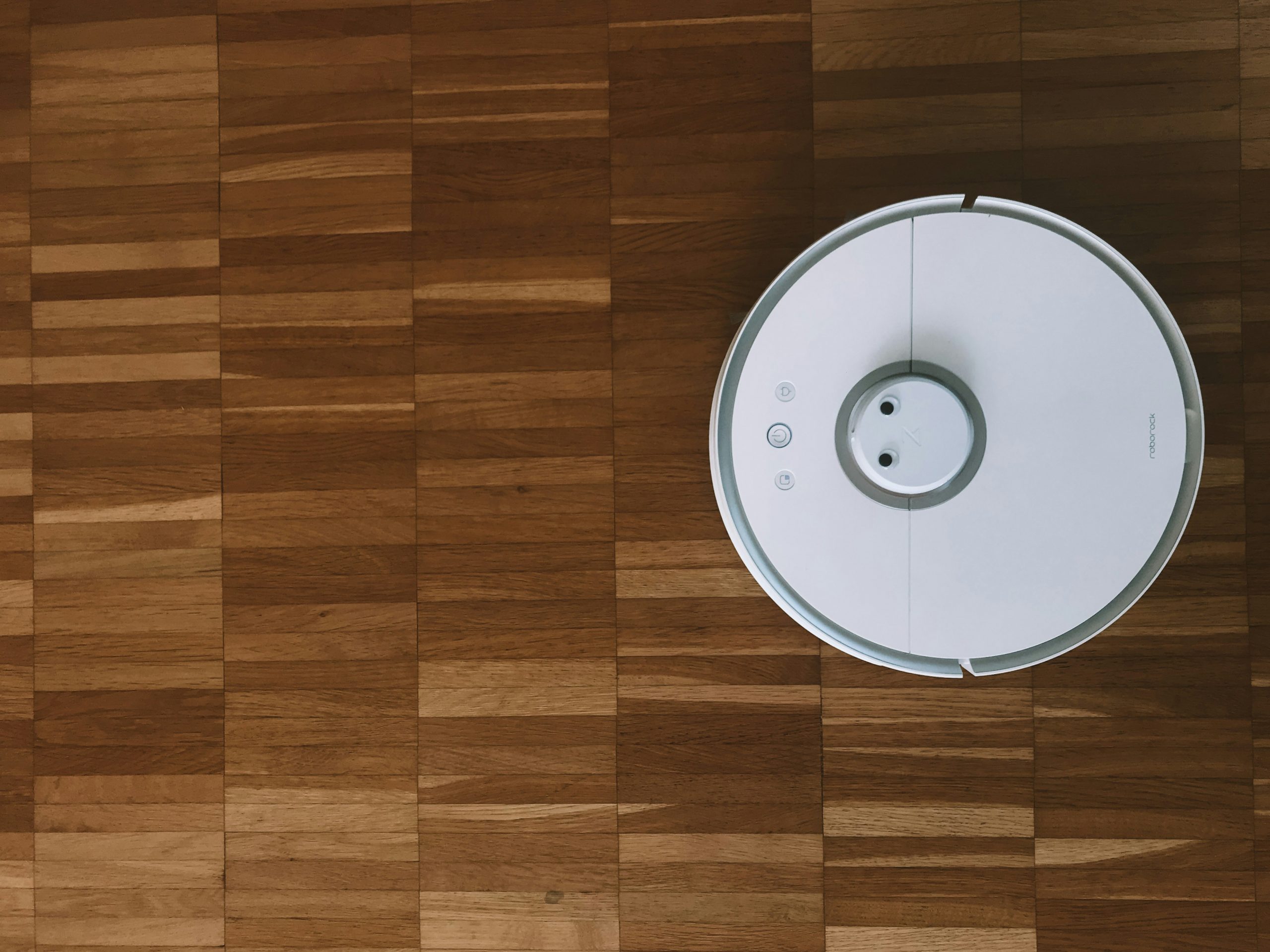

Vacuum cleaners are designed to efficiently remove dirt, dust, pet hair, and other debris from a wide range of surfaces, including floors, rugs, upholstery, and even ceilings. With powerful suction and specialized attachments, vacuum cleaners can tackle even the toughest cleaning tasks with ease, leaving your home looking and feeling fresh and inviting.
There are three main types of vacuum cleaners to choose from – corded vacuums, stick vacuums, and robot vacuums.
Traditional corded vacuums offer robust suction power and large capacity dust bins, making them ideal for deep cleaning carpets and larger floor areas. They typically come with a variety of attachments for versatile cleaning options and are well-suited for homes with pets or high-traffic areas that require frequent vacuuming.
Stick vacuums are lightweight and maneuverable, and perfect for quick and convenient cleaning. They feature a slender, stick-like design and are often cordless for hassle-free operation. Stick vacuums are ideal for everyday maintenance cleaning and reaching tight spaces, such as under furniture or between stairs.
Finally, robot vacuums offer hands-free cleaning convenience – they autonomously navigate through your home to keep your floors clean while you go about your day. Equipped with smart sensors and advanced mapping technology, robot vacuums can detect obstacles, avoid falls, and even return to their charging station when their battery runs low. While they may not provide the same deep cleaning power as corded or stick vacuums, they excel at light, daily maintenance cleaning, keeping your floors free of dust and debris with minimal effort.
While each type of vacuum cleaner offers its own unique benefits and advantages, most households find that a combination of vacuum types best suits their cleaning needs. For example, homeowners may use a robot vacuum for daily maintenance cleaning (programming it to clean floors automatically and pick up surface debris), while relying on a stick vacuum or corded vacuum for deeper or more specialized cleaning tasks that require additional power or precision.
7. Air conditioner
In Singapore’s tropical climate, where temperatures and humidity levels are high year-round, air conditioners are not just a luxury but a necessity for staying cool, comfortable, and healthy indoors. As the weather continues to get hotter with each passing year, investing in an air conditioner becomes increasingly vital for maintaining a livable indoor environment. Let’s explore why air conditioners are a must-have in Singapore and the optimal positioning for maximum effectiveness and comfort.


Sembawang Drive ($60,000) by U-Home Interior Design Pte Ltd
In Singapore’s hot and humid climate, air conditioners provide much-needed relief from the sweltering heat, allowing residents to escape to cool, climate-controlled environments within their homes. Beyond mere comfort, air conditioners also play a crucial role in safeguarding health, as excessive heat and humidity can lead to heat-related illnesses and exacerbate respiratory conditions. By maintaining comfortable indoor temperatures and humidity levels, air conditioners contribute to improved overall well-being and productivity.
When positioning an air conditioner in the living room, it’s essential to consider factors such as room layout, airflow, and occupant comfort. Ideally, the air conditioner should be centrally located to ensure even distribution of cool air throughout the room. Placing the unit away from direct sunlight and heat sources, such as windows or appliances, helps prevent energy waste and ensures efficient cooling. Additionally, positioning the air conditioner at a height that allows for unobstructed airflow and easy access for maintenance further enhances its effectiveness and longevity.
How about the bedroom? When choosing where to position your air conditioner in a bedroom, the goal is to direct cool air towards the bed without creating uncomfortable drafts or noise disturbances. Placing the unit away from the head of the bed and at a height that promotes airflow throughout the room helps maintain consistent temperatures and humidity levels, promoting restful sleep and overall well-being.
8. Fans
Air conditioning aside, fans are a popular and cost-effective solution for keeping cool in warm climates. With a variety of fan types and designs available on the market, it’s essential to understand the differences between them to make an informed choice for your cooling needs. Let’s explore the world of fans, including bladeless fans, traditional fans with blades, and what to consider when buying a fan.
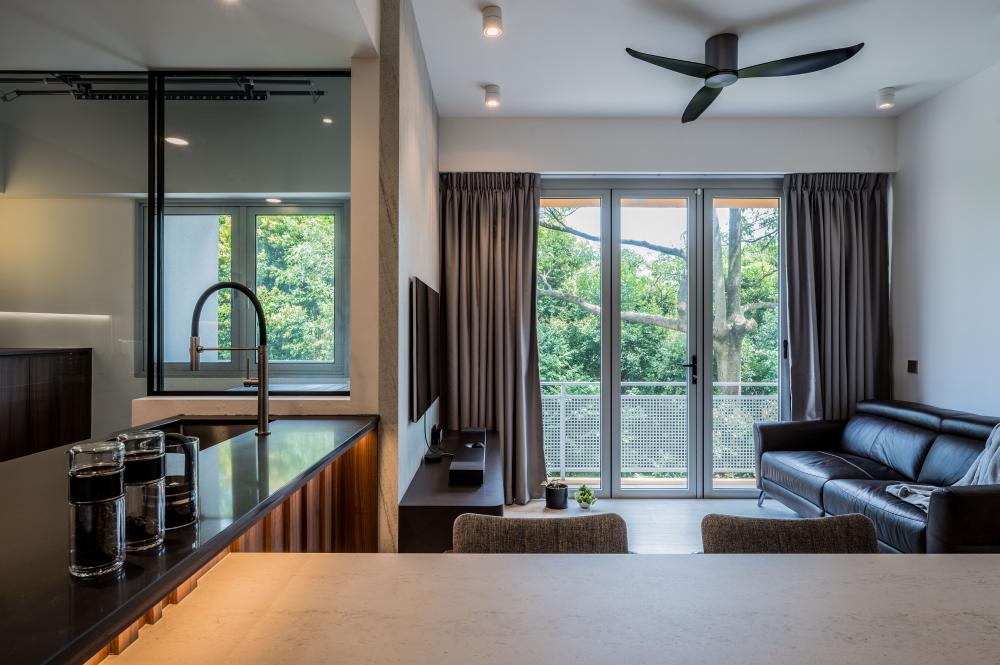

A K Apt ($35,000) by 13th Design Studio Pte Ltd
Firstly, traditional fans with blades are the classic choice for cooling, featuring a spinning blade or blades that circulate air throughout the room. These fans come in various designs, including pedestal fans, tower fans, and desk fans, offering versatility and affordability. While they may not offer the same sleek appearance as bladeless fans, traditional fans with blades provide effective cooling and come in a range of sizes and styles to suit different preferences and spaces.
Then we have bladeless fans, which have been popularized by brands like Dyson. These fans offer a sleek and modern design that eliminates visible blades for enhanced safety and aesthetics. Instead of traditional fan blades, bladeless fans use air multiplier technology to draw in air and amplify it, creating a smooth and uninterrupted airflow. These fans are often quieter and easier to clean than traditional fans, making them a popular choice for modern homes.
When purchasing a fan, several factors should be taken into consideration to ensure that you select the right model for your needs. Here are some key considerations:
Room Size: Consider the size of the room where the fan will be used. Larger rooms may require fans with higher airflow capacity or multiple fans for effective cooling.
Fan Type: Decide between different types of fans, such as pedestal fans, tower fans, desk fans, or ceiling fans, based on your preferences and space constraints.
Airflow Capacity: Look for information on the fan’s airflow capacity, usually measured in cubic feet per minute (CFM) or airflow velocity. Higher CFM or airflow velocity indicates greater cooling power.
Noise Level: Consider the noise level of the fan, especially if it will be used in bedrooms or other quiet spaces. Quieter fans are more conducive to a peaceful environment.
Oscillation and Directional Control: Look for fans with oscillation features that distribute airflow evenly across the room. Additionally, consider fans with adjustable tilt or directional control for targeted cooling.
Ease of Use and Maintenance: Choose a fan with user-friendly controls and easy-to-clean components for hassle-free operation and maintenance.
A final word on the essential appliances to get for your newly renovated home
In conclusion, as you embark on the journey of furnishing your newly renovated home, the selection of appliances plays a crucial role in shaping your living experience. By carefully considering your lifestyle, preferences, and household needs, you can choose appliances that not only streamline your daily routines but also enhance the functionality and comfort of your living spaces.
With the right appliances in place, you can transform your newly renovated home into a hub of efficiency and comfort, simplifying daily tasks and enhancing your overall living experience. Happy shopping!
Want to check out home renovation projects for more inspiration? Browse interior design ideas on Hometrust, or click the button below to get connected with expert designers!
Renovating soon? Let Hometrust recommend the best interior designers.
If you are reading this, you are probably wondering how you can create your dream home.
Here’s the thing, everyone’s needs and requirements for their home renovation is different. A designer that may work for someone else, may not quite work for you.
At Hometrust, we’re here to help match top rated designers, recommended by past homeowners to you through our data-driven and matching algorithm.
Whether you are looking for partial renovation or a full fledge overhaul, we’ll be able to recommend you top designers to match your renovation requirements and lifestyle.
Recommendations and free and you can simply start by helping us understand your needs below!
Get RecommendationsRenovate safe!
The Hometrust Team

